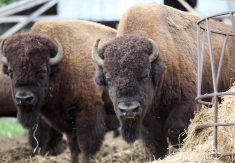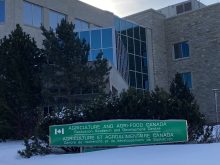Not long ago, $1,000 an acre for cultivated farmland raised eyebrows in Saskatchewan. Those days are long gone and aren’t likely to return.
Prices have been rising for years, slowly in the mid-1990s and after the turn of the century and more rapidly in recent years.
Real estate agents like Tim Hammond say prices took a particularly large jump last fall, and the market hasn’t cooled.
Some of the top prices are now approaching $2,000. A mere $1,000 an acre has become routine.
Read Also

High prices see cow-calf producers rushing to incorporate
Farm accountants are reporting a steady stream of cow-calf producers rushing to get their operations incorporated ahead of selling their calves this fall.
In southeastern Saskatchewan, where many producers seeded little or no crop in 2011, you would think that farmland prices would be suffering. Instead, the booming oil industry and new potash development have lent support.
Some observers are sounding alarm bells, advising producers that what goes up can just as easily come back down. That’s the lesson from the 1980s.
Farmland values increased dramatically through the 1970s and into the early 1980s. At that point, farm income went sour and interest rates went crazy.
Equity eroded as farmland prices dropped, and producers ended up owing more than their land was worth.
Incredibly, interest rates hit 16, 18 and even 20 percent, making it almost impossible to keep up if you were highly leveraged.
It could happen again, warns the cautious crowd. They point out that commodity prices and therefore land prices have always been cyclical. It took more than 20 years for Saskatchewan farmland to get back to the price levels of the early 1980s.
I’m usually in the cautious crowd. In this instance, though, there are a lot of reasons why farmland is likely to continue strong.
Saskatchewan is still cheap compared to most of Alberta. Actually, we’re cheap compared to almost anywhere in North America. Good land at $1,000 or even $2,000 per acre is unheard of in many jurisdictions.
That has led to the purchase of land as an investment. Sophisticated investment companies are involved, as are private buyers from other provinces.
Hammond says Chinese Canadians have also entered the market. In some cases, they are even planning to farm the land themselves rather than renting it out.
Some well-heeled Saskatchewan farmers are buying land they don’t intend to farm. They understand the land market and believe prices will likely appreciate. What investment could you have made that’s done as well as land in recent years?
Like residential housing, the land market has benefited from incredibly low interest rates.
If interest rates were to spike, land payments would become much more difficult to make. But interest rates aren’t expected to rise appreciably any time soon.
What if the grain market goes to heck in a hand basket? It’s not impossible. The whole world economy could go into a nasty downturn if some European countries can’t resolve their debt issues.
However, a lot of prairie farmers have made good money in recent years and pockets are now deep.
On top of that, many producers have built up good AgriStability coverage, which would tide them over for a year or two if things did get ugly.
Sure, land is worth way more than its productive value. That isn’t new. Land has always been an investment as well as the basis of production.
No one can know the future, but there’s a pretty good chance that we’ll look back at land that was once $1,000 or even $2,000 an acre and wonder why we were so cautious to buy.
Kevin Hursh is an agricultural journalist, consultant and farmer. He can be reached by e-mail at kevin@hursh.ca.















